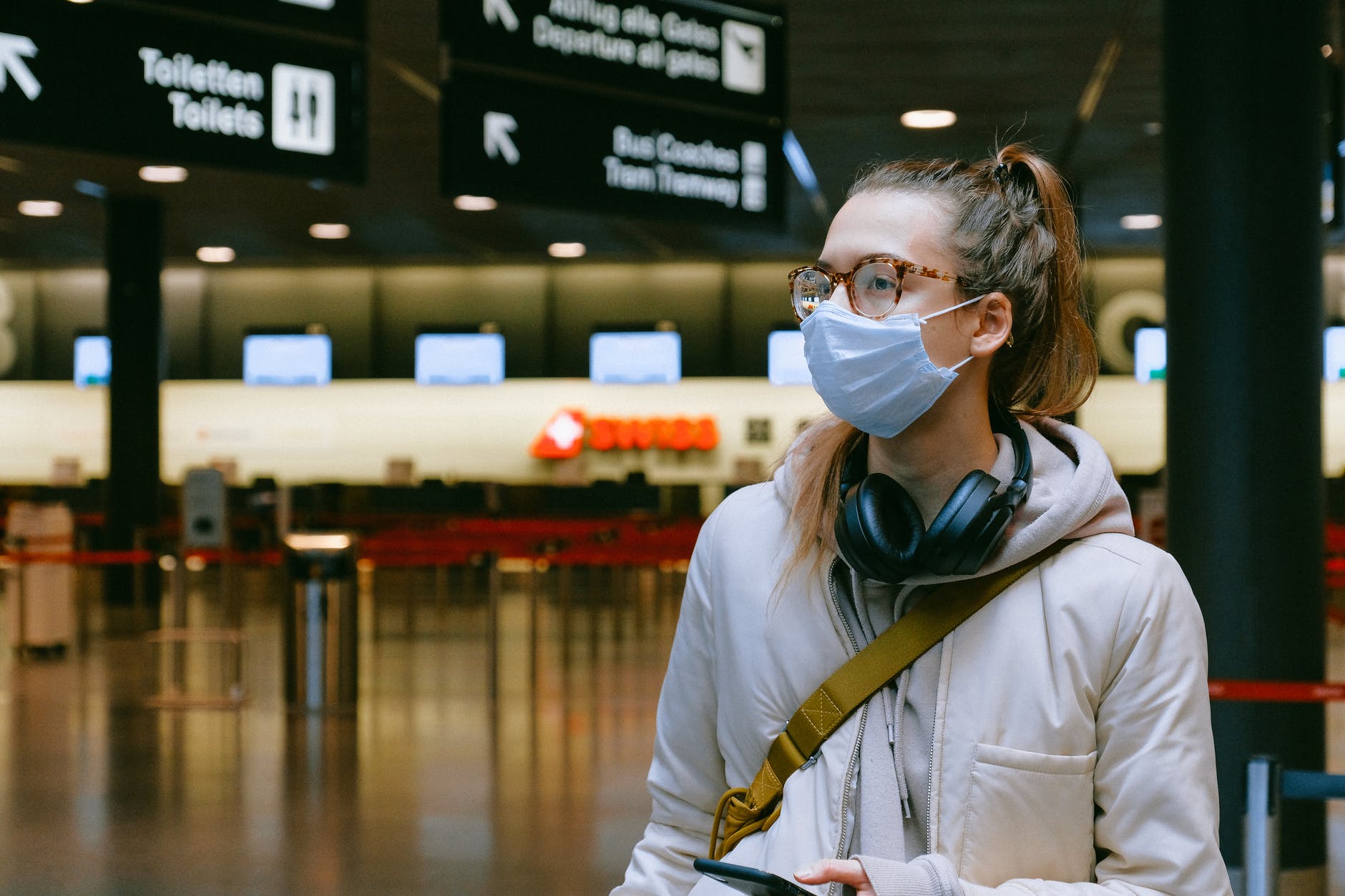BLOG
Staycations, sickness and self-isolation | How to manage short-term summer absences
Written by Alexandra Farmer on 5 July 2021

It’s not uncommon for businesses to experience higher levels of planned and unplanned absences over the summer months. However, this year, the option to finally go abroad, the return of sporting and social events, and ongoing COVID-related sickness and self-isolation may see businesses battling more short-term absences than ever before.
So how should these situations be managed?
Holiday requests
Managing holiday requests is normally fairly straightforward. However, this year, it will be made more complicated by COVID-19.
First, you may have employees who have returned from furlough with large amounts of unused holidays. To lessen the impact on your business, you may wish to compel these employees to take leave at a specific time, such as when you are better staffed or during quieter days/weeks.
Employers can legally do this by giving the employee twice as much notice as the number of days’ holiday you require them to take. For example, if you require the employee to take five days’ leave, you must give them 10 calendar days’ notice. It’s best to do this in writing, with the dates clearly set out.
A second challenge is employees who request holidays to go abroad. Given that they may need to quarantine upon their return, this may result in more time away from work than you can accommodate.
Unfortunately for businesses, limiting someone’s ability to travel to a country on the red or amber list is unlikely to be a ‘reasonable management instruction’. If the employee is a national of a country you’re instructing employees not to travel to, there’s also a potential risk of indirect discrimination. We don’t yet know how a Tribunal may deal with these scenarios, but it’s better to be safe than sorry.
You may be able to get around this hurdle by having employees work from home (or a managed quarantine hotel) during the post-travel quarantine period. If this isn’t possible, remember that asking employees to work somewhere other than where they are self-isolating, i.e. attend the workplace, can result in a fine of up to £10,000.
With this in mind, your first line of defence is to encourage employees not to travel to such areas unless it is necessary to do so, in accordance with public health advice. Financial impacts may also be a deterrent; you can advise the employee that if they are absent from work because they are required to quarantine on their return, they will not be entitled to pay, unless they take annual leave to cover that period, which would have to be booked beforehand in accordance with your normal annual leave procedures.
We recommend downloading our template Holidays Policy (below) to make your position clear ahead of time. For guidance on other quarantine-related scenarios, such as what to do if an employee knowingly travels to a red or amber country without getting approval for that period, download our International Travel and COVID-19 Guide.
Lastly, you may receive a request that simply doesn’t suit your business needs. If you want to refuse a holiday request, you must serve a counter-notice, giving at least as many days’ notice as the number of days you are refusing.
Related Content
Do you need support?
Speak to us for an honest, no obligation chat on:
0345 226 8393 Lines are open 9am – 5pm
COVID-related sickness and self-isolation
We are currently seeing an increase in COVID cases, which may hit businesses hard over summer.
For sickness related to COVID-19, employees are entitled to statutory sick pay (SSP) from day one of sickness, instead of the usual day four (though the absence would still need to continue for at least four days for SSP to become payable). They may also be entitled to company sick pay, depending on the rules of your contractual scheme and how it defines sickness/incapacity.
It’s worth remembering that employers with fewer than 250 employees can claim back SSP for the first 14 days of absence via the Statutory Sick Pay Rebate Scheme, which should at least ease the financial burden of these absences.
Making sure that workers self-isolate when they need to will help to prevent the disruption of multiple absences. As a reminder, workers should self-isolate (and be in receipt of SSP) if they:
- Have tested positive for coronavirus;
- Are symptomatic and are awaiting a test result;
- Live with or are in a ‘bubble’ with someone who has symptoms or has tested positive;
- Have received a notification to self-isolate from NHS Test and Trace; and/or
- Have been advised to do so by a doctor or healthcare professional prior to a hospital admission.
The self-isolation period is currently 10 days, and employees can work from home if that is feasible and they are well enough to do so.
One common question is whether COVID-related absence can be taken into account under a sickness absence process. On the face of it they can be, because like any short-term absence, they can be incredibly disruptive. Therefore, if trigger points are being hit as a result of a constant need to self-isolate, it may be reasonable to consider issuing warnings under your procedure. Just don’t be too hasty and remember to act reasonably in the circumstances.

Other short-term sickness absence
Other forms of short-term sickness absence should be dealt with in line with your absence management policy and procedure. It’s crucial that you have such a policy in place – and that you follow it – as this will help you to deal with cases consistently and effectively, thereby reducing legal risk.
It will also make employees aware of the standards of attendance and reporting that you expect from them, which may make employees think twice about calling in after a particularly heavy weekend.
The point at which you begin to manage attendance levels will normally be dictated by your absence management procedure and is normally commenced after a period of absence that results in the employee reaching your policy’s trigger point.
To start the procedure, you should hold an investigation into the absence concerns. It’s important to:
- Discuss your concerns regarding the level of absence;
- Go through the employee’s attendance record to ascertain the reasons for the absences;
- Ask if there is an underlying reason or condition impacting the employee’s attendance at work; and
- If appropriate, discuss what support is needed and can be offered.
In short-term absence cases, where the reasons for sickness vary and are not serious, it will rarely be necessary to obtain medical evidence. However, if there’s a pattern to the absence or an underlying condition, then a medical report may be needed before any action is taken, particularly to explore adjustments.
If this is the first time you have had to discuss the employee’s attendance, an informal letter of concern may suffice. In it, you should set targets for improvement and make clear that failure to meet these expectations will result in formal action.
If this is a recurring issue, you may wish to proceed to a formal meeting that could result in a formal outcome. Note that it will never be fair to dismiss someone with over two years’ service for persistent poor attendance without going through the full range of warnings first. Again, you must ensure that any warning issued is accompanied by a timescale and suggestions for improvement, together with details of the action the employer will take if there is no improvement within this timeframe.
Employers shouldn’t wait for absences to reach a problematic level before acting. Don’t underestimate the importance of return-to-work interviews; as well as providing an opportunity for you to raise concerns and explore whether there are any underlying reasons for the employee’s absence (perhaps related to their health or a work-related issue), these can also deter future absences (particularly fake ones) by showing employees that you are actively monitoring the situation.
Sickies
That brings us on to sickies – and there’s lots of temptation for these this summer.
If you have concerns that an employee is lying about or exaggerating their illness or injury to avoid attending work:
- Ask them if they can provide any medical evidence – this is difficult if they have only been off for a couple of days with a minor illness, but if they claim to have been in hospital, they will likely have discharge paperwork.
- Consider the timeline. Had the employee requested the day off as holiday but had it rejected? Was there a deadline for a piece of work they may not have wanted to face?
- Get statements/evidence. Colleagues will often raise that they spotted the employee down the pub or saw on social media that they were away on holiday, at a house party, etc. during their absence. Obtain the screenshots or messages to use within your investigations.
- Investigate with the employee on their return to work.

Be careful not to jump to conclusions. Don’t forget that employees may not be bedbound during their sickness absence, and they may nip to the shops, visit a relative or get some fresh air. Of course, if they claim to have sickness and diarrhoea, or something else that would prevent them from leaving the house such as COVID symptoms, and are spotted down the pub, that might be an entirely different matter.
If you do have evidence to support the case that the absence may be bogus, you should deal with the matter under your disciplinary process rather than the absence management procedure.
Keep absences under control this summer with specialist support
Absenteeism comes in many forms, from frequent short-term absences to complex long-term sickness and other sensitive scenarios involving mental health, pregnancy and possible disability. All can put a strain on your workforce and prevent your business from reaching its full potential.
Our experts can help you to proactively prevent all manner of absences through a robust sickness absence policy and, should they occur, guide you through the correct process to ensure they are dealt with efficiently, consistently and compliantly. That way, you can minimise disruption, reduce risk and facilitate a return to work.
For more information and to discuss your specific situation, call 0345 226 8393 or request your free consultation using the button below.
Sign up for the latest news & insights
Resources
Latest News & Insights

Work from wherever? | Things to consider before allowing employees to work from abroad
BLOG Written by Alexandra Farmer on 25 May 2022 A few years ago, the idea of working from anywhere in the world seemed like a pipe dream.

Reduced workforce? Here’s 5 health and safety areas you need to revisit
BLOG Written by Charles Spencer on 18 May 2022 In 2022, a growing number of businesses have moved, or are in the process of moving,

Fee for Intervention | Why health and safety breaches could cost your business more in 2022
BLOG Written on 16 May 2022 It’s a well-known fact that poor health and safety practices cost businesses money. And with the HSE recently announcing yet another

Remote work isolation | How employers can help combat loneliness
BLOG Written on 12 February 2021 While the benefits of remote work are seemingly boundless, often overlooked is the isolation and disconnectedness that it can

Time off for getting married or moving house
BLOG Written on 12 May 2022 There are certain big life events that can sometimes get in the way of work. Whether it’s a wedding

Recent cases highlight continued work at height failings
BLOG Written on 6 May 2022 Working at height continues to be the leading cause of work-related fatality. According to most recent HSE figures, these

Managing organisational change | How to keep people happy
BLOG Written on 28 February 2022 In the direst of circumstances, humanity’s true capacity for adaptation and perseverance can be realised. Where the business world

5 ways to combat 2022’s recruitment challenges when you can’t pay more
BLOG Written by Christian Vincent and Hannah Copeland on 15 April 2022 In 2022, recruitment and retention are fast becoming employers’ biggest challenges. With people

A war of words | Managing employees’ political views on the Russia-Ukraine conflict
BLOG Written by Lesley Rennie on 13 April 2022 The war in Ukraine, and the daily news reports of fatalities, continues to spark conversation in






